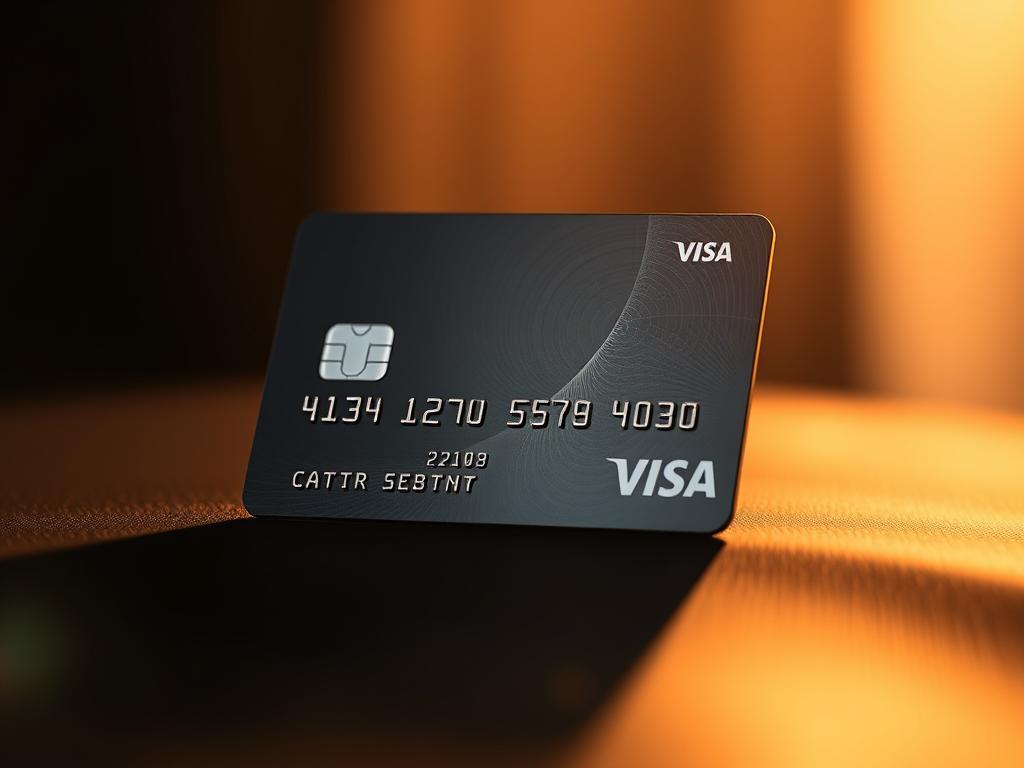You’re one step from unlocking top-tier travel protections and perks. A Visa Infinite card sits above Visa Signature and often adds elevated protections, concierge help, hotel perks, and enhanced rental car coverage.
What matters most is that issuers set exact inclusions, so your card’s guide tells the full story of fees, lounge access, and statement credits.
The playbook in this article shows how to enroll dining and lounge programs, activate hotel benefits, and confirm annual credits so your first year delivers clear value. You’ll also get a practical list of U.S. cards—like Chase Sapphire Reserve and United Club℠ Card—so you can compare rewards and travel fit.
Finally, you’ll learn which baseline protections to rely on—lost luggage, purchase protection, trip delay, and rental coverage—and how to file claims quickly if travel goes sideways.
Key Takeaways
- Visa Infinite sits above Signature and offers stronger benefits, but issuers control final inclusions.
- Enroll lounge and concierge services right after approval to start using benefits sooner.
- Compare top U.S. cards by rewards, travel perks, and annual value to find the best fit.
- Know baseline protections like lost luggage, trip delay, and rental coverage and keep documentation ready.
- Track statement credits and set reminders each year to capture full value.
Understanding Visa Infinite vs. Visa Signature and Issuer Add‑Ons
Understanding the structure helps you decide which premium credit card fits your travel patterns.
Visa offers three tiers—Traditional, Signature, and Infinite. Infinite builds on lower-tier protections and adds higher limits and concierge-style services.
What “Visa Infinite” means in the U.S. market today
At the Visa level, Infinite can include rental collision damage waiver (often up to the vehicle’s cash value), purchase and return protection, extended warranty, trip cancellation/interruption, trip delay, travel accident insurance, lost luggage reimbursement, roadside dispatch, and zero fraud liability.
But your bank decides what appears on your account. Issuers set caps, guesting rules, and enrollment steps for lounge access and statement credits. That’s why two cards that both say “Infinite” can behave very differently.
“Visa Infinite defines a baseline; the issuing bank writes the final terms that matter at claim time.”
Visa program benefits vs. bank issuer perks: how coverage really works
You should match Visa-level coverage to your card’s benefit guide. Look for exclusions, country limits, and whether protections are primary or secondary.
| Card | Issuer Add‑On | Typical Lounge Access | Key Statement Credit |
|---|---|---|---|
| Chase Sapphire Reserve | Priority Pass Select + travel credit | Priority Pass — full guesting | $300 annual travel credit |
| United Club℠ Card | United lounge network access | United Club access for cardholder | Airline incidentals credits vary |
| U.S. Bank Altitude Reserve | Limited lounge visits, travel perks | Eight lounge visits per year | Mobile travel credits and statement rebates |
- Check the guide to benefits to confirm caps and enrollment steps.
- Note how similar-sounding protections (trip delay, concierge) can have different triggers across issuers.
- Set reminders to enroll in lounge programs and to track statement credits so you don’t miss value.
How to Enroll: Eligible Cards, Annual Fees, and What to Check Before You Apply
Before you apply, line up a short list of Visa Infinite options and compare fees against the credits and lounge rules that matter to you.
Popular U.S. choices include Chase Sapphire Reserve, United Club℠ Card, Capital One Venture X, and Bank of America Premium Rewards Elite.
Quick checklist to review
- Annual fees per year: note amounts (for example, Sapphire Reserve and some premium cards carry high fees; Venture X and others are lower) and decide if credits offset that cost.
- Lounge access: verify Priority Pass enrollment, guesting limits, and whether authorized users get cards.
- Statement credits: check whether credits are broad travel credits or restricted airline incidentals and how they reset each year.
- Rewards and transfer partners: prioritize cards with the airline or hotel ecosystems you use to make rewards meaningful.
Use this short list to shortlist two or three cards and plan post-approval steps. Enroll in lounge programs right away and set reminders so the credits and perks aren’t left unused.
Travel and Lifestyle Benefits You Can Unlock Right Away
Once your card is live, a set of travel and lifestyle perks become available—if you activate them correctly. Confirm enrollments, know guest rules, and charge the right fees to capture credits and coverages.
Airport lounge access via Priority Pass
Priority Pass is the largest lounge network with 1,500+ locations. Most issuers require separate enrollment to activate access.
Check whether your card gives unlimited visits with guests or a fixed number of entries that count per person per visit. That affects how you plan layovers and companion access.
Visa Infinite Luxury Hotel Collection
The Luxury Hotel Collection delivers upgrades on arrival when available, daily continental breakfast for two, free Wi‑Fi, and late checkout on request.
Note: each property may include a $100 amenity credit. Verify the exact amenity before booking so the credit matches your stay.
Concierge services, Global Entry/TSA PreCheck, and car rental perks
Use the 24/7 concierge for dining reservations, event tickets, and tailored travel planning. It saves time and can secure hard-to-get experiences.
Many cards post a Global Entry or TSA PreCheck credit when you charge the application fee to your card. You can often use this for family or friends if the issuer allows it.
Car rental privileges with Avis, National, and Hertz include discounts and VIP amenities. Confirm that your booking meets the card’s rental coverage terms to ensure primary collision protection up to $75,000.
| Benefit | What to do | Typical result |
|---|---|---|
| Priority Pass | Enroll after card activation | Access 1,500+ lounges; guesting varies by issuer |
| Hotel Collection | Book via collection link or concierge | Upgrades, breakfast, $100 property credit |
| Concierge | Call or use portal for requests | Dining, tickets, itinerary help 24/7 |
| Global Entry / TSA | Charge fee to card | Reimbursement posts as a statement credit |
| Car rental | Book with partner brands and decline CDW if covered | Discounts, VIP perks, primary rental coverage |
- Keep enrollment confirmations and membership numbers handy.
- Calendar renewal windows so credits reset and stay usable.
- Check benefit terms for exclusions to avoid surprises when you travel.
Core Protections and Insurance That Save You Money
Understanding your core protections keeps surprise bills away. Read the limits and steps before you need a claim.
Rental car CDW: Many Visa Infinite cards cover physical damage and theft up to the vehicle’s cash value, often capped near $75,000. To qualify, pay with your card, decline the agency CDW/LDW, and follow vehicle, country, and rental length rules.
Trip cancellation, interruption, and delay
Cancellation and interruption often reimburse prepaid, nonrefundable costs up to about $2,000 per trip for covered reasons like serious illness or severe weather.
Trip delay can cover reasonable meals and lodging—commonly up to $500 per day after a 6+ hour delay or overnight.
Lost luggage and purchase protections
File with the airline first, then your homeowners or renters policy, then the card benefits for any remaining loss. Lost luggage limits are often up to $3,000 per trip.
Purchase protection covers theft or accidental damage within 90 days, usually up to $10,000 per claim and $50,000 per cardholder. Return protection may refund items the merchant won’t take back, often up to $300 per item and $1,000 per year.
Warranty and accident coverage
Extended warranty can add one year to manufacturer warranties of three years or less, with per‑claim caps. Travel accident insurance can provide AD&D coverage—sometimes up to $500,000—when you buy common‑carrier tickets with the card.
“Keep receipts, police reports, and boarding passes in one folder to speed claims.”
| Benefit | Typical Cap | Key Action |
|---|---|---|
| Rental CDW | $75,000 | Pay with card; decline agency CDW |
| Trip cancellation/interruption | $2,000/trip | Keep medical or weather proof |
| Purchase protection | $10,000/claim | File within 90 days |
How to File a Claim and Get Reimbursed Faster
Act fast and stay organized. When you need to file a claim, begin by collecting receipts, the card statement that shows your charge, and any vendor paperwork. That simple step speeds every review.
Documentation you need
Assemble the purchase or ticket receipt, the billing statement, and any rental agreement if applicable.
Include police or incident reports, repair estimates, and the airline Property Irregularity Report for lost luggage.
Deadlines to remember
Report rental damage or theft within 45 days and file the claim within 90 days. You may have up to 365 days to complete paperwork.
Notify Visa about baggage issues within 20 days after travel and submit remaining documents within 90 days. For purchase protection, report within 60 days and file within 90 days.
Where to file
Start most claims at eclaimsline.com or use Card Benefit Services and your issuer portal to upload documents. Attach everything in one submission to cut back-and-forth requests.
“Keep clear copies and a timeline of actions so you can respond quickly to requests.”
| Issue | Notice Window | Typical Documents |
|---|---|---|
| Auto rental CDW | Report: 45 days; File: 90 days | Rental agreement, statement, police report, repair estimate |
| Lost luggage | Report to airline at airport; notify Visa within 20 days | PIR, airline claim, receipts, card statement |
| Purchase protection | Report within 60 days; file within 90 days | Receipt, statement, police report (if theft) |
- Calendar the days milestones so you don’t miss windows for notice and filing.
- Check coverage rules in your benefit guide to see if protection is primary or secondary before you file.
- Respond quickly to requests and keep copies of everything for appeals.
visa-infinite-maximize-travel: Actionable Strategies and Cardholder Playbooks
A smart cardholder playbook sequences credits and benefits so you pay less and travel better. Use this short plan to stack travel credit, hotel perks, lounge access, and rental protection on one trip.

Stacking credits and perks
Start by applying your annual travel credit to core trip costs. For example, use the up-to-$300 travel credit on chase sapphire for airfare or travel bookings first.
Next, book hotels through the Visa Infinite Luxury Hotel Collection to capture upgrades, breakfast for two, and the $100 amenity credit.
Then, charge incidentals and airline fees that qualify for statement credits so you trigger reimbursements without wasting benefits.
Card-by-card nuances
Compare how cards offer value: chase sapphire delivers broad travel credits plus full Priority Pass. The united club℠ card focuses on airline club access and elite perks. Venture X gives portal-centric credits and strong day-to-day rewards.
Check whether rental coverage is primary on your infinite card and which vehicle classes or countries are excluded.
Real-world itinerary playbook
- Reserve flights and use lounge access on outbound and return airport visits.
- Book a rental with Avis, National, or Hertz to pair negotiated discounts with card rental car coverage.
- Pre-book a hotel via the Infinite collection to secure breakfast and the $100 amenity credit.
- Photograph receipts and boarding passes so you can file a claim fast if delay or damage occurs.
“Enroll lounges, confirm rental rules, and save receipts before you leave — small steps speed claims and boost value.”
| Step | What to do | Result |
|---|---|---|
| Travel credit | Apply to airfare or travel portal | Immediate statement credit |
| Hotel | Book via Visa Infinite collection | Upgrade, breakfast, $100 amenity |
| Rental | Pay with card; decline CDW if covered | Primary or secondary coverage per card |
Conclusion
Close smart: align enrollment, credits, and bookings so your Visa Infinite rewards deliver net value each year.
Use the benefit guide as your single source of truth for coverage limits, exclusions, and required enrollments. Confirm lounge access, concierge rules, and hotel collection steps before you book.
Pay rentals with your card and decline the agency CDW so the card’s rental coverage applies. Photograph receipts, boarding passes, and receipts as you go.
If you need to file a claim, submit a complete packet to eclaimsline.com or Card Benefit Services within the stated days. That speeds reimbursement for lost luggage, purchase protection, trip delay, or damage.
Track renewals and credits on your calendar so fees turn into benefits you actually use at the airport and on the road.
FAQ
What does “Visa Infinite” mean in the U.S. market today?
Visa Infinite identifies a premium level of Visa network benefits offered to cardholders, such as enhanced travel protections, concierge access, and luxury hotel perks. In the U.S., the exact mix of benefits depends on the issuing bank — for example, Chase, Capital One, or other issuers add their own credits, lounge access rules, and fees. Always check both the Visa Infinite benefit guide and your card issuer’s terms to know what applies to your account.
How do Visa program benefits differ from issuer perks?
Visa provides baseline network benefits like certain travel insurances, purchase protections, and concierge services. Issuers layer on perks — examples include annual travel credits, Priority Pass memberships, or airline statement credits. You should read both the Visa benefit descriptions and your bank’s card disclosures so you know whether a benefit is provided by Visa or by your issuer.
Which cards in the U.S. are commonly marketed as Visa Infinite?
Popular cards that carry Visa Infinite branding or similar premium Visa network features include the Chase Sapphire Reserve, United Club℠ Card (issued by Chase), and cards like Capital One Venture X that partner with Visa. Card offerings change, so review current issuer pages for exact benefit lists, fees, and enrollment steps.
What key terms should you review before applying for a premium Visa card?
Review the annual fee, lounge access limits and guesting rules, statement credits or travel credits, foreign transaction fees, and the scope of travel and purchase protections. Also check how to enroll in certain benefits (some require activation) and whether benefits apply only when you pay with the card.
How do you activate Priority Pass lounge access and what are the guesting rules?
Many premium cards require you to enroll in Priority Pass via your issuer’s benefit portal. Once enrolled, guest policies vary: some cards include free guests, others charge per guest. Confirm enrollment steps with your issuer and carry a Priority Pass digital or physical card when you travel.
What does the Visa Infinite Luxury Hotel Collection offer?
The Luxury Hotel Collection typically provides benefits like room upgrades (subject to availability), daily breakfast for two, early check-in/late checkout when possible, and a property credit — often around 0. These perks apply when you book through the designated Luxury Hotel portal and pay with your eligible card.
How do concierge services work and when should you use them?
Concierge services are available 24/7 to help with dining reservations, event tickets, travel planning, and special requests. Call or use your issuer’s concierge portal; they can save time and sometimes secure hard-to-find reservations or upgrades. Charges for third-party bookings will usually be billed to your card.
How do you get the Global Entry or TSA PreCheck credit?
Many premium cards reimburse the application fee for Global Entry or TSA PreCheck when you pay the charge with the card. To trigger the credit, pay the government fee with the eligible card; credits post as a statement credit, typically within one to two billing cycles. Check whether the credit is limited to the cardholder or extends to authorized users.
What car rental privileges come with premium Visa cards?
Premium cards often include discounted rates, elite status partnerships with Avis, National, or Hertz, and perks like expedited pick-up and free additional drivers. Additionally, Visa’s rental car coverage can provide primary or secondary collision damage protection — verify whether coverage is primary, the dollar limits (often up to ,000), and any exclusions for certain countries or vehicle types.
When is rental car coverage primary versus secondary?
Coverage depends on the card and issuer. Some premium Visa cards offer primary rental car insurance when you decline the rental agency’s collision damage waiver and pay for the rental with the card. Other cards provide secondary coverage that supplements your personal auto policy. Confirm your card’s Guide to Benefits for exact terms.
What trip cancellation, interruption, and delay protections should you expect?
Visa Infinite level protections typically cover covered reasons like illness, severe weather, or carrier bankruptcy, with limits that vary by card. Trip delay benefits may pay per-day expenses after a set number of hours delayed. Trip cancellation and interruption reimburse nonrefundable prepaid costs up to policy caps. Always check covered reasons, per-trip limits, and documentation requirements.
How does lost luggage reimbursement work?
Airlines are the first source of reimbursement for lost or delayed luggage. If the airline’s settlement falls short, your card’s baggage delay or loss benefit may reimburse additional expenses up to the card’s limits. Keep airline reports, receipts for essential purchases, and your card statements to file a claim.



